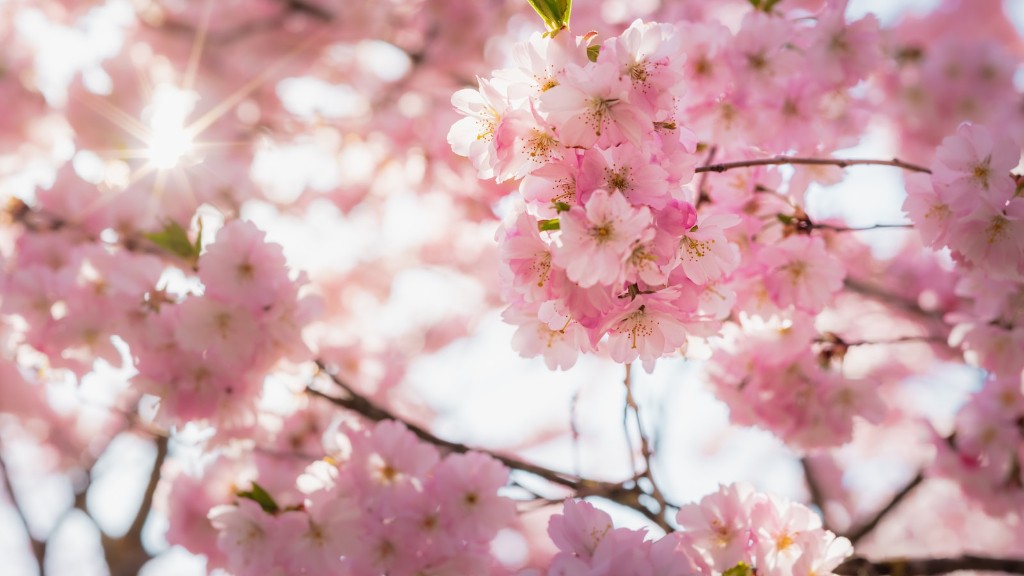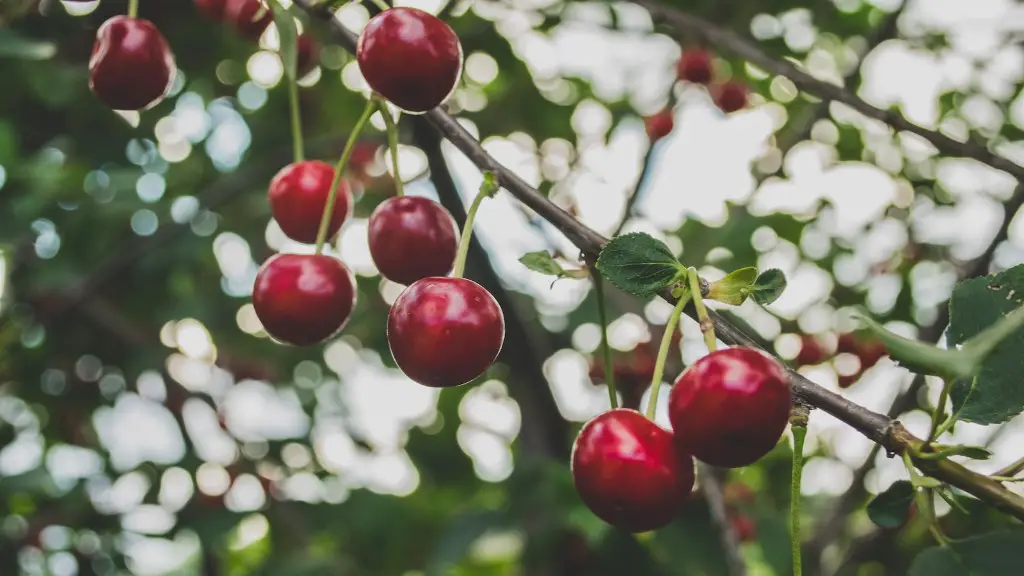Want to grow lemons on your own lemon tree? It’s a rewarding experience and possible with a little bit of knowledge and effort. Some patience and commitment is also necessary, as a lemon tree may take some time to bear fruit. While there’s no definitive answer as to when a tree will produce lemons, there are some things you can do to give your tree the best opportunity for success.
Your first step should be to research which types of lemon trees are best suited for your climate. Lemons won’t grow in cold weather, so make sure your tree is a variety that can thrive in your region. When it comes to planting, soil type is also important. Well-drained and acidic soil is best, so consider having it tested before planting.
Once the tree is planted, you’ll need to be diligent with watering and fertilizing. Lemons need more water than other fruit trees, especially when in bloom and bearing fruit. Water deeply but only when the top few inches of soil are dry. Fertilizing with a nitrogen-rich fertilizer once or twice per year is also important. Adding compost or organic matter to the soil around the trunk can help increase soil fertility.
In order to give your lemon tree the best chance of success, you’ll also need to keep it pruned correctly. Pruning encourages new growth and can help prevent overcrowding, which can reduce the number of fruits. Pruning at the wrong time, however, can cause delayed yields, so get some advice from an expert or follow the instructions in the lemon tree’s care guide.
To get your trees in a healthy condition, you’ll want to get some help from beneficial insects. Ladybugs, for example, are natural predators of some of the most common pests that may attack your lemon tree. Introducing these beneficial bugs to the soil around your tree can help keep pests away, allowing your tree to thrive.
There are also some diseases that can affect lemon trees, some of which are known to cause fruit production to slow or halt entirely. Again, consult with an expert or read up on some potential diseases if you’re concerned about your tree. An early diagnosis and quick action can help treat the disease, allowing you tree to start bearing fruit once again.
It’s impossible to guarantee that your lemon tree will bear fruit but following these steps can increase the chances of success. With the right combination of climate, soil, water and care, you can enjoy the sweet, juicy rewards of growing your own lemons.
Nutrition for Lemon Trees
Another key element in promoting healthy lemon tree growth is proper nutrition. Make sure to maintain the right nutrient balance in the soil around your tree. The micro-organisms in the soil can also help catalyze available nutrients, so it’s important to maintain proper air and water circulation. Adjust the soil pH as needed and add fertilizer as directed.
The right balance of essential nutrients and minerals is also essential. Nitrogen is especially important, as it stimulates leaf growth, while phosphorous helps strengthen the trunks and roots. Potassium, magnesium and calcium are three other nutrients required for healthy growth. To ensure your tree is getting all the nutrition it needs, use fertilizer specifically formulated for citrus trees or consider using compost or other organic matter.
While not strictly necessary, adding a layer of mulch around the trunk can provide even more benefits. Mulch helps conserve moisture, suppresses weeds and keeps the soil temperature more even by acting as an insulator. Organic mulches like wood chips, grass clippings and shredded leaves also add nutrients and help improve the soil’s texture as they decompose.
Nutrition is an important factor in the overall health of any tree, so always take into account the needs of your lemon tree. Especially if you wish for it to produce sweet fruits.
Water Requirements for Lemon Trees
In addition to proper fertilization, lemon trees need adequate watering. The soil should always feel moist at least two to three inches below the surface. Watering deeply once every week or two is usually enough, though during the hottest months and while fruits are ripening, more frequent watering may be required.
Regular rain can fulfill some of your tree’s water needs, but if the soil becomes dried out, it may be necessary to water the tree yourself. Be sure to use water that’s at room temperature and avoid using a sprinkler, as the leaves don’t absorb water very well.
Additionally, it’s a good idea to mulch the soil around the tree. Mulching prevents rapid evaporation, helping to keep the moisture in the soil for your tree’s roots to absorb. Organic materials such as wood chips and straw are great options, but keep the mulch at least a few inches away from the trunk and main branches.
When water is needed, it should be delivered slowly, allowing the water to seep deep into the soil. Overwatering can be just as bad as underwatering, so you’ll need to gauge the amount of water your tree needs. If in doubt, it’s always better to err on the side of caution and provide a bit less water.
Sunlight and Temperature Requirements
Your lemon tree should receive plenty of sunlight to thrive, so make sure it’s planted in an area receiving at least 6-8 hours of sun per day. During the hottest months, you may need to shade some of the fruit to prevent it from getting sunburned.
In terms of temperature, ideal lemon growing conditions include daytime temperatures between 65-85F and nighttime temperatures between 55-65F. When nighttime temps drop below freezing, some protection for the tree may be necessary. Covering it in blankets or plastic sheeting can help, and if temperatures drop below 25F for an extended period, the tree may need to be moved indoors.
It’s also worth noting that extreme temperatures of either kind can negatively impact fruit production. Too much heat causes the flowers to drop prematurely, preventing fruit from forming. Too little warmth can delay blooming and reduce your tree’s growth. With that in mind, try to keep temperatures within the ideal range whenever possible.
Pollination and Pruning Needs
Lemon trees need pollinators such as bees to transfer pollen and make the tree’s fruits. If bees are scarce in your area, hand pollination is a viable option. Simply take a small artist’s brush, dip it in pollen from a flowering branch, and gently rub it onto the flowers of the tree.
When it comes to pruning, aim to remove dead, diseased and overcrowded branches. Also, prune the tree whenever it produces lemons. Pruning encourages the growth of new, fruiting branches and can help keep your tree healthy and productive. Aim to prune after the lemons have been harvested and don’t take too much off at once. Doing so can reduce the amount of time needed between harvests.
Remember to also keep an eye out for pests. Ladybugs are a great way to control aphids, but if any appear, use an insecticidal soap or horticultural oil to get rid of them. Regular inspection to check for other pests such as mealybugs or scales is also important.
Potential Problems
In addition to pests, there are some diseases that can affect lemon trees. Some of the most common include Citrus Canker and Citrus Greening. Both can cause the leaves to yellow and fall off and can slow or halt fruit production. If you notice any symptoms of these diseases, contact your local extension service for advice.
Other problems you may encounter include root rot and nutrient deficiencies. Signs of root rot include wilting leaves and a pungent odor. To treat root rot, remove any affected parts and prune away any dead and dying branches. To prevent it in the future, ensure the soil is well-drained and the tree isn’t being overwatered.
Nutrient deficiencies tend to cause yellowing leaves and can be treated by correcting the soil pH and fertilizing with the right nutrients. If correcting the soil isn’t enough, you may need to use a foliar fertilizer or supplement with Epsom salts.
Harvest and Storage Tips
Lemons generally take two to three years to start producing fruit, and about a year for them to ripen. During this time, the flowers will need to be pollinated regularly and the tree cared for diligently. Once the lemons are ripe, you can start to pick them. Make sure to grab only the fully ripe fruits, as the unripe ones won’t ripen after being picked.
Most lemons ripen in early summer and will last several weeks on the tree. Lemons can also be stored in the refrigerator after being picked, and should last for several weeks. To extend their life even longer, consider freezing them or preserving them in syrup, juice or zest.
Enjoying Your Home Grown Lemons
A successful harvest of lemons is incredibly rewarding. With proper care, you can enjoy your own home-grown lemons for years to come. Enjoy the fruits of your labor in lemonade, baked goods, and other favorite recipes.
Take your time and enjoy the process of growing and caring for your lemon tree. With the right conditions and enough patience, you can look forward to reaping the rewards of sweet, juicy lemons.





